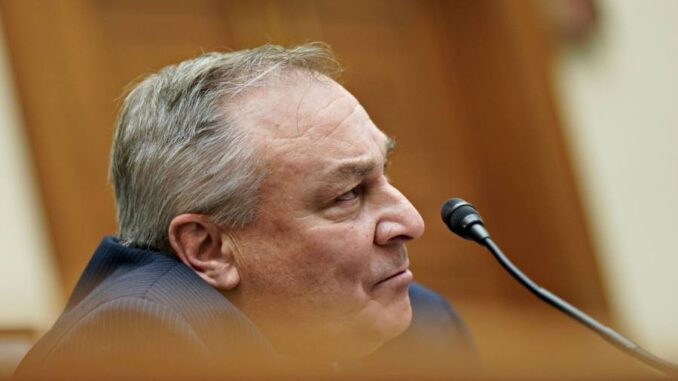
John Ray III has built a 40-year career tending to companies hit by epic blow-ups, from Enron to Nortel Networks. But as the new boss of FTX, he may be facing his toughest task yet.
Ray took over the beleaguered cryptocurrency exchange at 4.30am on November 11, when founder Sam Bankman-Fried signed over control amid a multibillion-dollar bank run.
Ever since, he has been working day and night to restore order in the face of a global firestorm that has left the once-lionised Bankman-Fried arrested and jailed on fraud charges as more than 1mn customers of a company with an $8bn balance sheet hole wonder if they will ever recover their savings.
“Think of John Ray in the vein of Red Adair,” said James Bromley, a lawyer for FTX at Sullivan & Cromwell, in a reference to the celebrated firefighter who circled the globe to take on blazes at oil wells.
Ray, a Massachusetts native, trained as a lawyer and by the 1990s had risen to general counsel at garments maker Fruit of the Loom. When the company went belly-up in 1999, he received a crash course in how to pick up the pieces of a busted company.
Eventually he started his own consulting firm specialising in messy blow-ups, landing at such high-profile companies as Nortel Networks, Overseas Shipholding Group and Residential Capital. But he made his name at Enron in the mid-2000s as both a tactician and brawler looking to recover money for claimants of the fraudulent group.
The job at FTX entails not only a deft understanding of finance, accounting and law but also an ability to make daily judgments that can bring calm amid the cacophony. Then, the basic tasks of locating and valuing assets that can eventually be allocated and distributed to FTX victims can proceed.
The contrast is stark between the besuited Ray, 63, and his predecessor at FTX known for his T-shirts, board shorts and a shrub of curly hair.
Ray has carefully avoided any public judgments directed towards Bankman-Fried, choosing his words carefully. And unlike Bankman-Fried, he has mostly communicated his public thoughts in legal filings or via FTX lawyers speaking in court.
Still, he has been unsparing in his descriptions of FTX.
In testimony to the US Congress this week, Ray said that despite a career spent tackling “large and vexing corporate failures involving allegations of criminal activity”, he had never “seen such an utter failure of corporate controls at every level of an organisation, from the lack of financial statements to a complete failure of any internal controls or governance”.
Among his findings, Ray, who has largely been working from New York, could not even determine how much cash FTX possessed and also found that some amount of FTX cryptocurrency had gone missing.
Of the information he has been able to gather and review, Ray has sought to organise its presentation methodically. Among the 100 FTX subsidiaries that filed for bankruptcy in a Delaware federal court, he explained to the judge the sprawling and intertwined operations could be distilled into four separate silos. He told Congress that he had five distinct objectives in his job.
Bromley, who recruited Ray, recalled meeting him years ago in the wind-down of Enron, the notorious Texas energy trader. Ray, as Enron’s emergency chief, had aggressively litigated with Enron counterparties, including Bromley’s client, Lehman Brothers.
Enron creditors believed big Wall Street banks had been the key enablers of the company’s byzantine shell companies that facilitated its fraud. There was little hope initially that much could be done to recover money. Ultimately, however, Ray was able to use litigation as a means of winning billions in total settlements with the likes of Citigroup and Lehman Brothers.
The contentiousness at FTX has been limited but significant. The company is seeking to keep the names of its accountholders, who are its primary creditors, confidential. This has drawn the ire of the Office of the US Trustee, which says the move violates the spirit of transparency in Chapter 11 proceedings.
Recommended
A jurisdictional battle between Ray and the Bahamas, where Bankman-Fried located the FTX command centre, has already commenced. FTX Digital, a subsidiary not included in the US bankruptcy case, has been taken over by a trio of local liquidators who say substantial FTX assets remain within the Bahamian entity.
Ray has accused authorities in the Bahamas of withdrawing cryptocurrency from FTX in cahoots with Bankman-Fried in the days surrounding the bankruptcy filing.
Each side has sharply criticised the actions of the other. Bahamian authorities have rejected Ray’s claims, which they have said “do not appear to be concerned with facts but rather, appear intended only to make headlines and advance questionable agendas”.
For his fire-fighting skills, Ray is being paid by FTX a flat $1,300 per hour — even if it requires being up before dawn.






Be the first to comment